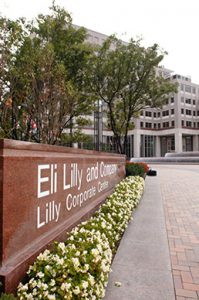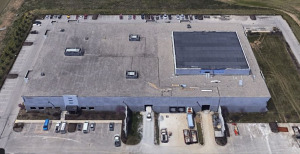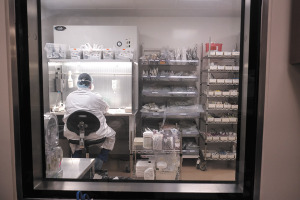Purdue Pharma exit plan gains steam with OK from more states
The agreement from multiple state attorneys general, including those who had most aggressively opposed Purdue’s original settlement proposal, was disclosed late Wednesday.
The agreement from multiple state attorneys general, including those who had most aggressively opposed Purdue’s original settlement proposal, was disclosed late Wednesday.

The radiopharmaceutical developer and manufacturer is the latest in a string of life sciences firms that have announced plans to grow operations in Fishers.
The role of the sticky substance in the brain has long divided researchers and is at the forefront again amid the FDA’s recent clearance of the first drug to treat the disease in almost two decades.
Drugmaker Biogen has until 2030 to complete a study confirming whether its new drug Aduhelm truly slows the brain-destroying disease. That’s under the terms of the Food and Drug Administration’s conditional approval of the drug.
Eli Lilly and Co. shares jumped more than 9% Thursday morning after it received “breakthrough therapy” designation for donanemab from the U.S. Food and Drug Administration, putting the drug on a path that could expedite its development.
Critics have blasted the approval of Aduhelm, saying the drug—with a list price of $56,000 a year per patient—offers false hope while threatening Medicare’s financial health and patients’ pocketbooks.
Stevanato Group, a producer of syringes, vials and glass containers, announced Wednesday it will spend $145 million to build and equip a 370,000-square-foot facility in Fishers.

The use of COVID antibodies has fallen across the United States lately and, along with it, Lilly’s sales in that category.
Separately, Dr. Aaron Kesselheim of Harvard University became the third member of an FDA advisory panel that opposed the drug to step down over the decision to approve it.

Shares of Biogen competitors soared after aducanumab became the first drug cleared by the U.S. Food and Drug Administration to slow the course of the mind-wasting disease that afflicts 6 million Americans.
Few such drugs are approved now, but the approach is predicted to become a new way to treat patients with other hard-to-reach or inoperable cancers.

Eli Lilly on Thursday said in a government filing that it has received a subpoena from the U.S. Justice Department for documents related to the factory and is cooperating with the investigation.
Pfizer Inc. said Tuesday that it expects global sales of its coronavirus vaccine to reach $26 billion in 2021. Its success helps illustrate why Pfizer is planning to expand use of mRNA technology for other vaccines and therapies.

Curium, a nuclear medicine company with global headquarters in London and Paris and its North American headquarters in St. Louis, took over the Noblesville facility when it acquired Zevacor Molecular in March 2020.
Even without the Johnson & Johnson vaccine, the U.S. is still on pace to meet its vaccination goals. Perhaps more concerning is the potential blow to public confidence in all of the vaccines.
The CDC and FDA said Tuesday they were investigating clots in six women that occurred 6 to 13 days after vaccination.

The expert panel for the Food and Drug Administration voted 19-1 that the drug’s modest benefits don’t outweigh its considerable risks, even with proposed measures to restrict who gets the medicine.
The company said its experts did not identify any safety concerns related to the vaccine, including finding no increased risk of rare blood clots identified in Europe.

Health care practitioners and insurers are fighting over the hefty prices hospitals charge for specialty drugs to treat patients with cancer, vision loss, low white-blood-cell count and other serious diseases.

Eli Lilly and Co. on Saturday morning presented highly anticipated details from a mid-stage study showing that its experimental drug slowed Alzheimer’s disease progression over about 18 months.